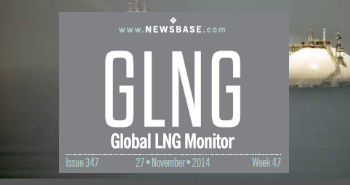Malabo’s big dreams for Mega Gas Hub
Equatorial Guinea could become a major hub for regional gas trade – if its plans come together
WHAT: Equatoguinean authorities are talking up the MGH project, which is designed to support gas production at local fields and in neighbouring countries’ offshore zones.
WHY: Initially the plan will focus on stabilising domestic gas production.
WHAT NEXT: Plans to handle foreign gas will face steep hurdles.
The government of Equatorial Guinea recently began talking up its plans for the creation of a Mega Gas Hub (MGH) at Punta Europa, saying that it was ready to lead the way toward the establishment of new facilities serving local natural gas fields, as well as fields controlled by neighbouring states.
In late September, for example, Equatoguinean Minister of Mines and Hydrocarbons Gabriel Mbaga Obiang Lima drew attention to the project. He noted that Malabo had already initiated the first phase of MGH and said it was now looking to generate momentum for the second phase, which is designed to make Punta Europa a regional hub capable of facilitating the production and export of gas from multiple countries with offshore fields in the Gulf of Guinea.
Lima’s statements indicate that Equatorial Guinea is aiming high and working to diversify and grow its economy by prioritising regional trade and making preparations for the time when its own crude oil and natural gas resources run out. And that day certainly is coming; the country’s oil production peaked in 2004, while gas yields began sinking about three years ago and are likely to continue trending downwards.
But ambition isn’t everything. Equatorial Guinea’s MGH plan has two phases, and it remains to be seen whether the first phase will succeed or not.
Mega Gas Hub (MGH)
Officials in Malabo presented plans for MGH to the world in 2018 and then followed by striking a deal on the first phase of the project the following year.
That deal provided for US-based Noble Energy, which is now under the control of Chevron, to proceed with the Alen gas monetisation project. It called for Noble to shift the focus of upstream development work at the Alen field in the Douala basin from gas condensate to natural gas – that is, to shift from flaring off natural gas or re-injecting it to help maintain reservoir pressure in condensate deposits to collecting gas in order to sell it.
Chevron then announced in February of this year that it had begun work on the Alen project. At the time, it said in a press release that it expected the scheme to help “[maximise] development of current and future regional gas resources” in Equatorial Guinea.
At the time, the US super-major’s optimism seemed warranted. After all, first-phase plans for MGH also called for stepping up development work at other Equatoguinean offshore gas fields in order to help sustain production rates and keep the EG LNG gas liquefaction plant and the gas-based petrochemical plants in Punta Europa running at capacity.
Falling production
It’s not clear, though, that this objective will be met.
David Thomson, the vice president of sub-Saharan Africa research at Houston-based Welligence Energy Analytics, told NewsBase earlier this week that he did not expect Equatorial Guinea’s gas production to rise in the near future. The country is currently extracting around 650-700mn cubic feet (18.4-19.8mn cubic metres) per day, he noted, and its yields are likely to drop over the next few years, just as they have been doing since 2018. Gas output is “expected to decline going forward,” he said.
Moreover, Thomson said, Equatorial Guinea does not appear to be heading for a wave of new discoveries. The country is not slated to bring more undeveloped sites online any time soon and shows “little sign of appetite for full greenfield developments,” he commented.
Additionally, he also raised questions about the efficacy and long-term impact of the Alen scheme. “A further phase of the Alen gas project is believed to be progressing, but its scope and timeframe is unclear,” he told NewsBase.
(He did not elaborate, but it’s worth noting that his statements are in line with suggestions from IHS Markit that paint Alen as more of a stopgap than a solution. According to the consultancy, the gas project may “help maintain feedstock to the EG LNG facility until the mid-2020s, but longer-term supply stability is still uncertain.”
New gas streams
Presumably Malabo could help reduce the level of uncertainty by taking steps to encourage investment in upstream gas exploration and development.
For his part, Thomson believes that Malabo does recognise the importance of securing new sources of gas production, even if it is working slowly. He told NewsBase that Equatoguinean authorities were “working on gas incentives as part of its mega-hub plan, and these are expected in 2022,” he said. “The changes will be focused on helping to backfill supply to Punta Europa.”
His statements may be a reference to Lima’s announcement during the webinar last month that Equatorial Guinea’s government was gearing up to formulate a new Hydrocarbon Law for the country. During his presentation, the minister said that Malabo wanted to reward companies that helped to develop gas fields and other upstream assets.
“This is no time to stop and be comfortable. In the era of energy transition and stiff competition for capital, it is important to be pragmatic and have a hydrocarbon law that deals with today’s realities and incentivises growth,” Lima commented. “We have to be more competitive, cut red tape, promote free markets, balance local content, create more jobs and increase our tax base.”
Second-phase hurdles
But even if these challenges can be overcome, the second phase of Equatorial Guinea’s MGH project will also face steep challenges.
According to Thomson, the hurdles may be legal, logistical or diplomatic. “Potentially, we will see stranded Nigerian and Cameroonian gas fields developed as part of the hub. Yolanda in Cameroon is a prime candidate,” he told NewsBase. “But cross-border agreements are tricky, and Nigeria is also facing supply pressures for its NLNG [Nigeria LNG] project and its own domestic market.”
It’s not yet clear whether Equatorial Guinea is ready to work to achieve this goal. If it does, though – and if it succeeds – it may just be able to sell its neighbours on its vision of a regional gas trading hub that uses tie-backs and pipelines to connect local and nearby fields to facilities in Punta Europa rather than relying on floating production, storage and off-loading (FPSOs). “Utilising existing infrastructure has cost and time advantages over deploying new kit,” he commented.




Follow us online